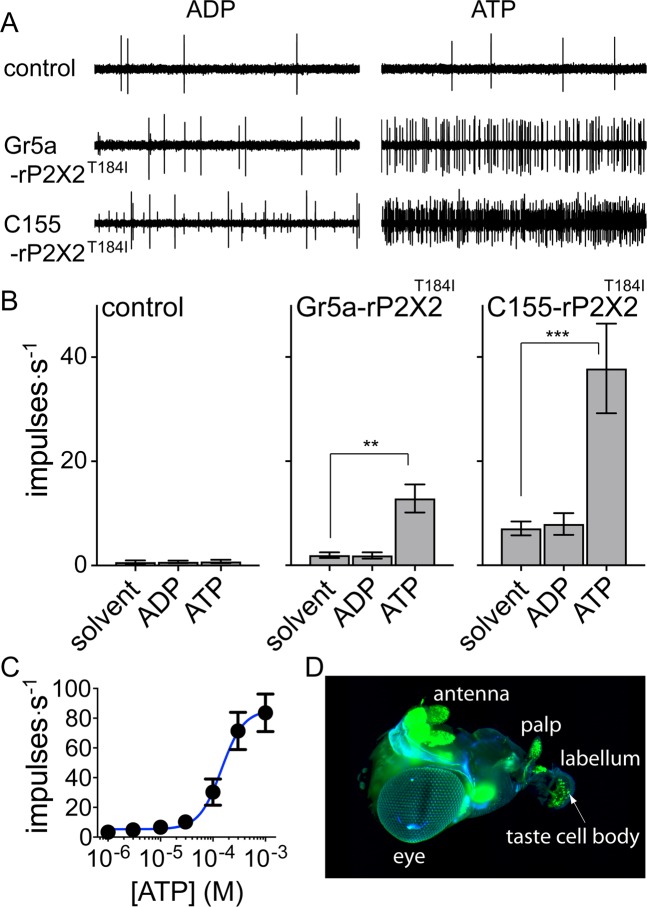Figure 4.
Responses mediated by T184I rP2X2::GFP in taste neurons. (A) 100 μM ATP elicits responses from mutated rP2X2 while 100 μM ADP does not. Top traces from control flies carrying a UAS transgene but no driver, middle traces from flies expressing T184I rP2X2 in sugar taste neurons under control of the Gr5a promoter, bottom traces from flies with pan-neural expression of T184I rP2X2 under control of the C155 driver. (B) Mean responses (with SEM) to solvent, ADP and ATP in control flies and in flies expressing T184I rP2X2 in sugar taste neurons and in all neurons (ns p ≥ 0.05 **p < 0.01 ***p < 0.001 paired Anova and post-hoc Dunnett’s test). Solvent elicited impulse rates among genotypes differ significantly between Gr5a-rP2X2T184I and C155-rP2X2T184I, p = 0.0001 (unpaired Anova and post-hoc Dunnett’s test). (C) Response to ATP in flies expressing rat P2X2 to increasing concentrations of ATP (mean and SEM, N = 14, EC50 = 145 μM with 95%CI 92 to 370 μM). (D) Light-sheet fluorescence micrograph of neurons with pan-neural expression of T184I rP2X2::GFP (in green).

